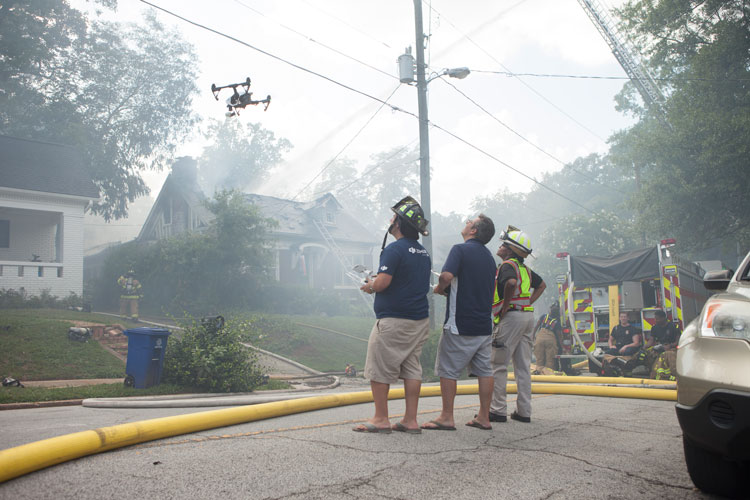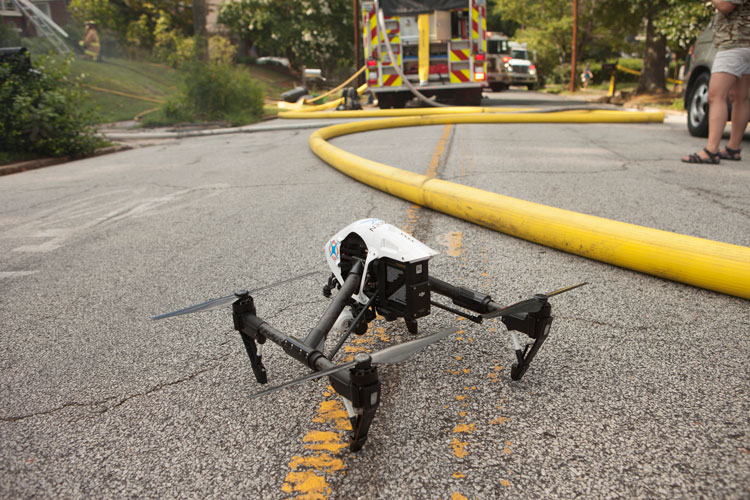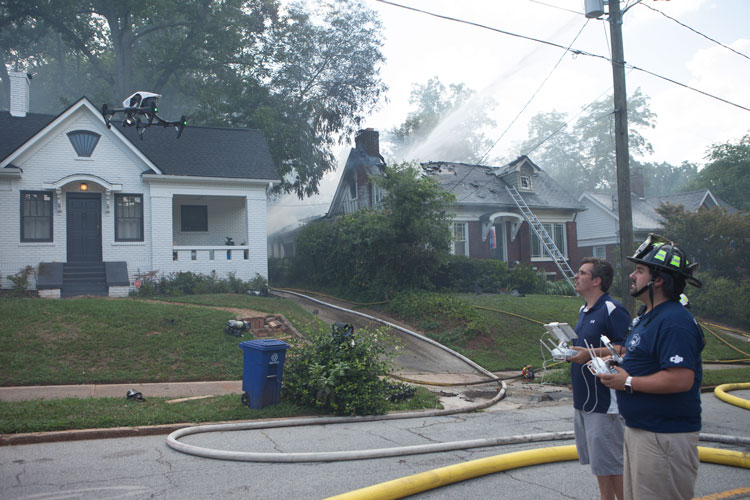

By Matt Sloane
It was mid-2014, and I was about six weeks into a new career as a public safety unmanned aerial system (UAS) consultant. I took a chance, got a booth at a firefighters conference, and had some of my very first conversations about drones in the fire service.
I didn’t know much, the firefighters I spoke to knew even less, but we were pioneers, navigating a complex regulatory environment together to start some of the earliest programs in the fire service.
Admittedly, there were a few law enforcement agencies who had gone before us, and we tried to learn as much as we could from them; but there was absolutely nothing in the way of true guidelines or a standard for anyone to follow.
Four years later, there have been scores of white papers, blog posts, and informative articles in this publication and others, but we still lacked a true standard. That is, until just recently.
On November 29, the National Fire Protection Association (NFPA) released their 2400 Standard for Small Unmanned Aerial Systems (sUAS) used for Public Safety Operations.
The three-in-one standard, a first for NFPA, includes a section on creating and operating a drone program, professional qualifications and job performance requirements for pilots and visual observers; and a section on drone maintenance and reporting.
RELATED: Matt Sloane on Starting a Fire Service Drone Program | Drones in the Fire Service | Training Minutes: Best Practices for Fire Service UAS
More than 30 voting members (myself included) and their alternates from the fire service, equipment manufacturers, consultants, academia, the Federal Aviation Administration (FAA), and other federal agencies came together over a two-year period to create this standard. It was a very accelerated pace, for a complex topic with so many facets.
So what does NFPA 2400 mean for the future of drones in the fire service, and how can it help you if your department is looking to start a program?
Let’s break down the standard according to its three main sections to find out.

Organizational Deployment and Considerations for sUAS
The purpose of this section is to guide departments who are considering starting a UAV program through the process of developing a concept of operations, picking appropriate equipment, developing internal policies, and identifying necessary job roles.
The initial sections in this chapter encourage agencies to first do an operational needs assessment on what types of calls and operations within their organization could be helped by a drone. That list might include things like hazmat response, search and rescue, fire surveillance, EMS functions, or joint operations with law enforcement.
Your department most likely engages in all of these functions, but the standard suggests that understanding which of these you’ll address first with your UAS program is an important thing to consider before making your first drone purchase.
As tempting as it is to rush out and buy equipment, neither your department or your future UAS program will benefit from a hasty purchase without the necessary research.
In that vein, having policies and procedures in place for selecting the right operators, mission profiles, and data retention and implementation plans are also key factors to have in place before a purchase.
Once your department has a Concept of Operations and these policies in place, the standard recommends developing a purchase specification that will inform your procurement decisions.
Purchase specs should include things like operational requirements for the aircraft and associated systems, comparative data on which models may best suit your needs, and an idea of expected life span.
Finally, this chapter addresses operational considerations for your program.There are several important points made in this section, including the need for the pilot in command to be the one having final authority to fly or not to fly based on risks (read: not the chief or command staff). It also stresses the importance of including drones and their operators into your incident command structure.
Although the standard doesn’t specifically address FAA authorization or a preferred regulatory framework (Part 107 certification versus a Certificate of Authorization), it does clearly state that drone missions should only be undertaken for official department functions; and should comply with whichever regulatory framework you choose.
Rounding out this chapter is a section on flying multiple sUAS at one time and the need to differentiate equipment, people, and missions. It also recommends designating a UAS coordinator to keep watch over multiple teams.

Professional Qualifications for sUAS Public Safety Personnel
The purpose of this chapter is to establish the different types of positions needed to operate a UAS program, qualifications for selecting people to fill those roles, and the job performance requirements for each.
The first position dealt with in the standard is the Remote Pilot in Command (RPIC). This is the person who will be in charge of operating the drone on-scene, making the go/no-go decision based on known risks, overseeing the visual observer and sensor operator(s), and communicating mission objectives and results up through the Incident Command System structure.
RELATED: Authoring Your Drone Program: Choose Wisely | Drones and the Fire Service | Fire Focus: Drone at Rockford (IL) Fire
Duties of the RPIC include planning UAS operations, doing a pre-flight risk assessment and equipment inspection, taking off, assuring visual line-of-sight with the aircraft is maintained, performing the mission objectives, landing safely, and returning the equipment to a mission-ready state.
The RPIC will typically be the person responsible for delivering mission data in accordance with chain-of-custody requirements, and debriefing mission personnel and incident commanders with the appropriate information.
Each one of these job functions has requisite knowledge and requisite skills associated with it; and personnel selected for these roles must be competent in each of the requirements before being allowed to operate.
The second job role identified in the standard is the Visual Observer (VO). This person will be responsible for maintaining visual line-of-sight with the aircraft and briefing the RPIC of the drones’ whereabouts and safety.
The standard notes that this person should have no other on-scene duties besides acting as a visual observer, and in some situations, this role is a requirement for FAA compliance.
The final role that is suggested in the standard is that of UAS Coordinator. Although it does not list specific job skills and requirements for that role, someone to oversee multiple drones operating on one scene, or to oversee the program as a whole, is an important role.

Maintenance of sUAS
The final chapter in the standard sets forth recommendations for maintaining UAS equipment, who should be allowed to perform the maintenance, appropriate reporting procedures, and a process for reporting discrepancies.
The standard recommends that agencies should have procedures in place for routine cleaning of the sUAS, decontamination, maintenance necessary due to operational applications or environmental factors, and equipment storage requirements.
Each step in the maintenance process should be appropriately documented, and any discrepancies found in the course of maintenance should be reported to the appropriate person within your organization.
Following these three main chapters in the standard is tons of useful information in the appendices, including details on how to evaluate various types of equipment, standardized test methods for both equipment and personnel, and a more detailed list of possible use cases in the fire service.
Although NFPA 2400 is a voluntary standard, it gives departments a valuable roadmap for developing and implementing a successful sUAS program. It brings some order to the chaos many of us have faced in trying to invent the wheel.
It was an honor for me personally and professionally to serve with such esteemed members of the fire/rescue and drone communities, and my hope is that NFPA 2400 continues to evolve to help all of us save lives with this important and emerging technology.
Matt Sloane is the founder and CEO of Skyfire, a public safety UAS consulting firm based in Atlanta. He is a licensed EMT and manned aircraft pilot and is an inaugural member of the NFPA technical committee on unmanned aircraft systems.

